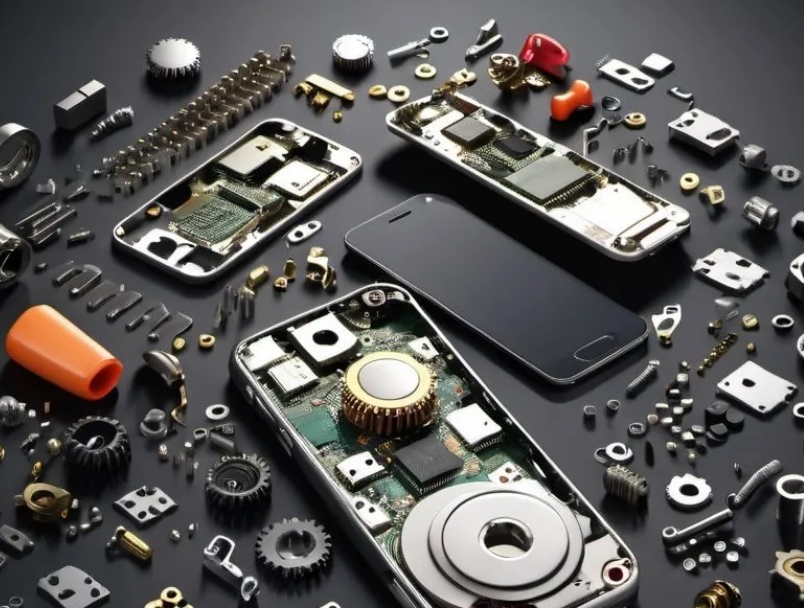
The smartphone industry continues to evolve at a rapid pace, with manufacturers constantly pushing the boundaries of what's possible. Here are ten exciting innovations to keep an eye on in the coming years:
Under-Display Cameras
- How it works: Camera hidden beneath the display, becoming visible only when in use
- Benefits: True full-screen experience without notches or punch-holes
- Challenges: Maintaining image quality through the display
Foldable and Rollable Displays
- Types: Inward folding, outward folding, and rollable screens
- Benefits: Larger display in a compact form factor
- Future prospects: Improved durability and more diverse form factors
Advanced AI Capabilities
- Features: On-device AI for improved photography, battery management, and user experience
- Applications: Real-time language translation, advanced voice assistants
- Privacy benefit: Reduced need to send data to the cloud
Improved Battery Technology
- Innovations: Solid-state batteries, graphene-based batteries
- Benefits: Faster charging, higher capacity, improved safety
- Potential impact: Multi-day battery life on a single charge
6G Connectivity
- Speed: Theoretical speeds up to 1 Tbps
- Applications: Enhanced AR/VR experiences, holographic communications
- Timeline: Expected to begin rolling out by 2030
Advanced Biometric Security
- Technologies: In-display fingerprint sensors, 3D face recognition, palm scanning
- Benefits: Improved security and convenience
- Future developments: Combining multiple biometric factors for enhanced security
Sustainable and Eco-Friendly Designs
- Materials: Recycled and biodegradable components
- Features: Easily repairable and upgradeable designs
- Goal: Reducing electronic waste and environmental impact
Enhanced Augmented Reality (AR) Capabilities
- Hardware: LiDAR scanners, depth sensors
- Applications: Immersive gaming, virtual try-ons, advanced navigation
- Potential: AR glasses integration and control
Improved Thermal Management
- Technologies: Vapor chamber cooling, graphene heat dissipation
- Benefits: Better sustained performance, cooler devices during heavy use
- Impact: Enabling more powerful mobile computing
Advanced Haptic Feedback
- Technologies: Ultrasonic transducers, electrostatic haptics
- Applications: More realistic touch feedback, virtual textures
- Potential: Enhanced gaming experiences, improved accessibility features
The Impact of These Innovations
- User Experience: More intuitive and immersive interactions with devices
- Productivity: Enhanced capabilities for mobile work and creativity
- Connectivity: Seamless integration with other smart devices and environments
- Health and Wellness: Advanced sensors for improved health monitoring
- Sustainability: Reduced environmental impact through better design and materials
Challenges and Considerations
- Privacy and Security: Balancing advanced features with data protection
- Regulatory Hurdles: Ensuring compliance with evolving tech regulations
- Cost: Making cutting-edge technology accessible to wider audiences
- Power Consumption: Managing energy use with more advanced features
- User Adoption: Educating consumers on the benefits of new technologies
The Future of Smartphones
As these innovations mature, we can expect smartphones to become even more central to our daily lives. They may evolve into control hubs for our digital ecosystems, seamlessly connecting with AR glasses, smart home devices, and even neural interfaces.
The line between smartphones and other computing devices may blur, with modular designs allowing phones to dock into larger systems for enhanced productivity or entertainment experiences.
Ultimately, these innovations aim to make our devices more capable, intuitive, and seamlessly integrated into our lives, while also addressing concerns about sustainability and long-term environmental impact.
american-boffin.com
bfbchamp.com
democraticcoma.com
tigrepelvar.com
charpoles.com
derbywheelblazers.com
fansfocus.net
guildnow.com
hediyeteyze.com
isprimecdn.com
kiira-korpi.net
manutd24.com
mediumtylerhenry.com
mishanghai.org
savethreestrikes.com
smilesbydavis.com
10puntos.net
band-shirt.com
icelandtrails.com
paulmarioday.com
thefunnynanny.com
Dave Tries Ballet
Buon Grande
Criacao Sites
Perry Perkins Books
Writing Essay in AU
Ka Soku
Blood is Blood Movie
Eleanor Writes Things
The Happy Prince Beirut
Town of Witless Bay
Online Igrovoi Club
Trigeminal Neuralgia - Ronald Brisman MD
Chocolate City Burlesque
Advanced Electric Scooters
W Tougei
Breadboard Maniac
Takasu App



